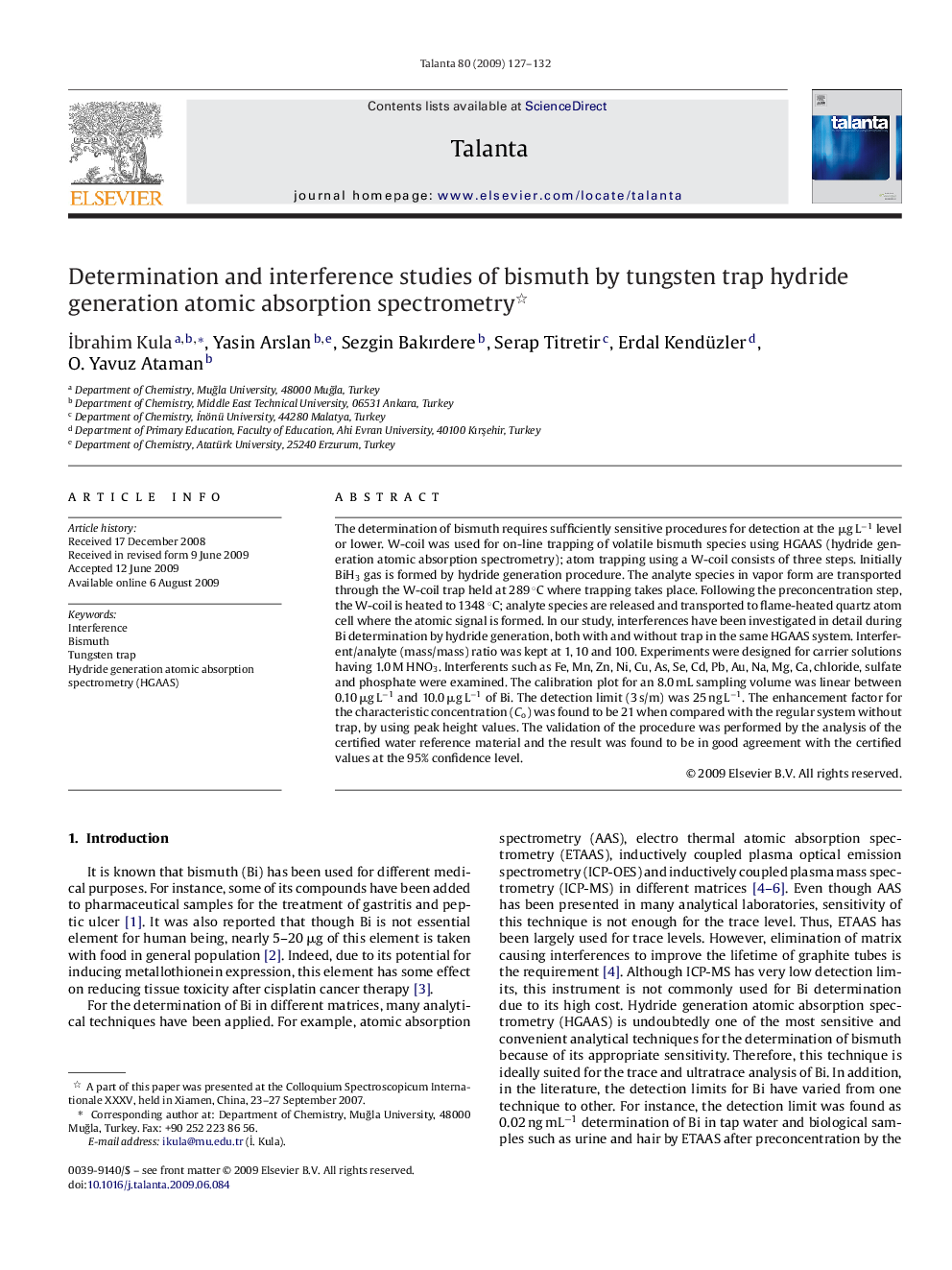| Article ID | Journal | Published Year | Pages | File Type |
|---|---|---|---|---|
| 1243653 | Talanta | 2009 | 6 Pages |
The determination of bismuth requires sufficiently sensitive procedures for detection at the μg L−1 level or lower. W-coil was used for on-line trapping of volatile bismuth species using HGAAS (hydride generation atomic absorption spectrometry); atom trapping using a W-coil consists of three steps. Initially BiH3 gas is formed by hydride generation procedure. The analyte species in vapor form are transported through the W-coil trap held at 289 °C where trapping takes place. Following the preconcentration step, the W-coil is heated to 1348 °C; analyte species are released and transported to flame-heated quartz atom cell where the atomic signal is formed. In our study, interferences have been investigated in detail during Bi determination by hydride generation, both with and without trap in the same HGAAS system. Interferent/analyte (mass/mass) ratio was kept at 1, 10 and 100. Experiments were designed for carrier solutions having 1.0 M HNO3. Interferents such as Fe, Mn, Zn, Ni, Cu, As, Se, Cd, Pb, Au, Na, Mg, Ca, chloride, sulfate and phosphate were examined. The calibration plot for an 8.0 mL sampling volume was linear between 0.10 μg L−1 and 10.0 μg L−1 of Bi. The detection limit (3 s/m) was 25 ng L−1. The enhancement factor for the characteristic concentration (Co) was found to be 21 when compared with the regular system without trap, by using peak height values. The validation of the procedure was performed by the analysis of the certified water reference material and the result was found to be in good agreement with the certified values at the 95% confidence level.
